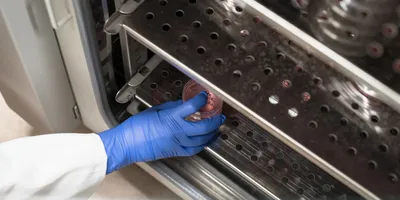
CURRENT ISSUE | VOLUME 6 - ISSUE 5 | June 2011
COVER STORY
Workplace Safety
If you've underestimated the business benefits of OSHA's VPP program, think again
White Papers and Application Notes
Research-Specific Labs

The food sector in the United States (US) is experiencing its biggest changes in decades. This year, Congress passed the Food Safety Modernization Act, updating regulations first implemented in 1938. The act greatly expands the powers of the Food and Drug Administration (FDA), whose new clout now includes food recall authority. Also in 2011, the Dietary Guidelines for Americans, which are revised every five years, were updated to push for healthier diets overall, and especially for children.
Laboratory Technology
How it Works
Surveys
Product Focus
Lab Health and Safety Tips
Lab Product
Ask the Expert

Stephen Barnes, Ph.D., Professor of Pharmacology & Toxicology and Director of the Targeted Metabolomics and Proteomics Laboratory at the University of Alabama at Birmingham (UAB), talks about the changes taking place in the field of mass spectrometry (MS) as it migrates from the research lab to a clinical environment.
Leadership and Staffing
Business Management

To appreciate the significance—or the ubiquity— of commercial tamper protection, one needn’t go any farther than the local grocery store. You, and many other consumers, probably wouldn't use a product with a broken seal. If grocery store patrons have a low tolerance for uncertainty, imagine the burden of proof facing scientific intellectual property owners in a court of law.

“Intellectual property has the shelf life of a banana,” commented Microsoft’s Bill Gates. So why should laboratory managers worry about keeping intellectual property confidential? Gates’ statement may be true for computers and information technology. However, in many other business areas, intellectual property can have a much longer shelf life and needs to remain confidential for many years.














